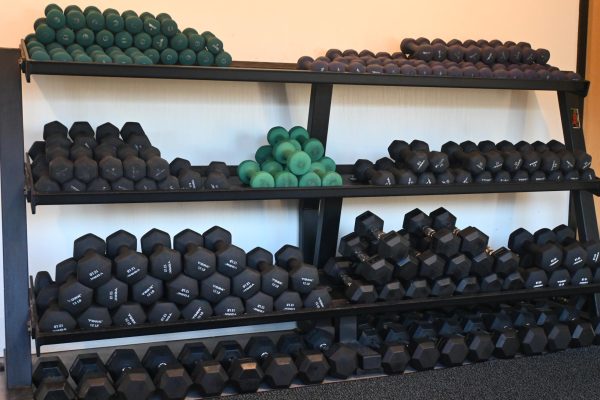The intrusive ping of an email, the loud chatter from a nearby table, the temperature two degrees higher than comfortable, the artificial floral smell of detergent. People and technology make noise, the weather fluctuates and smells persist despite our desires. Distractions can easily be found everywhere.
Kelly Williams is a Core Power Yoga instructor. “Buddhists would say that life is filled with 10,000 joys and 10,000 sorrows … I think that we tend to plant those sorrows quite more than the joy sometimes,” she said.
Williams offers yoga in a way to quiet outside distractions and focus on breath.
In its origin, yoga is an indigenous practice for Hindus, Jains and Buddhists. Regarded by many as the basis of yoga philosophy, Yoga Sutras are a set of scriptures estimated to be written in 500 B.C. They define eight guiding limbs of yoga: yamas (abstinences), niyama (observances), asana (posture), pranayama (breathing), pratyahara (withdrawal), dharana (concentration), dhyana (meditation) and samadhi (absorption).
Most American studios center their practice around the asana, meaning movement, leading many to think that the essence of yoga is primarily workout, which is not the case. Yoga has a rich history, rooted in spiritual discipline, which has supported many in navigating life for generations.
Twenty years ago Williams’ sister invited her to her first yoga class. At first, Williams hated it, especially the last pose, Savasana, or corpse pose, a posture of stillness. But, Williams returned again, that time on her own. And afterward, again and again.
Ten years later, during a difficult transitional period in her life, Williams attended a yoga teacher training. Williams was particularly intrigued by pranayama, breathwork.

“Breath is what we come into this world with and what we’ll leave this world with. We always have it … I think it can change energy in our bodies,” she said.
Sophomore Norah Evens also finds breath-work to be a valuable skill she learned in yoga and now uses it in other facets of her life.
“I have found … the ability to just take deep breaths and continue to do what I want to do all by myself … not having to rely on someone else,” she said.
Similar to Williams, junior Eloise Leatham also was first introduced to yoga by her sister. Leatham now returns to the studio independently, finding a sense of openness and focus in her practice.
“It’s a very non judgmental space … everyone has different weights but you’re just focusing on yourself,” Leatham said.
Williams supports this idea, stating that she feels unafraid of judgment since everyone is focused on their own goals: “Yoga offers me this feeling of being present and being like an unjudging witness,” Williams said.
A product of the mindfulness practice, Williams, Evens, and Leatham all recognize experiencing positive emotions during and after class, finding calm, renewed energy and a deeper sense of presence in their daily lives.
“In yoga class we talk about … how you should be grateful and how you’re living … I bring that into my everyday life, just thinking ‘Oh, I get to do this.’ I don’t think of everything in a negative manner,” Leatham said.
Beyond poses, yoga offers a space to quiet distractions and find clarity—one breath at a time. For Williams, Evens and Leatham, the practice extends beyond the mat, shaping how they navigate life with mindfulness and intention.